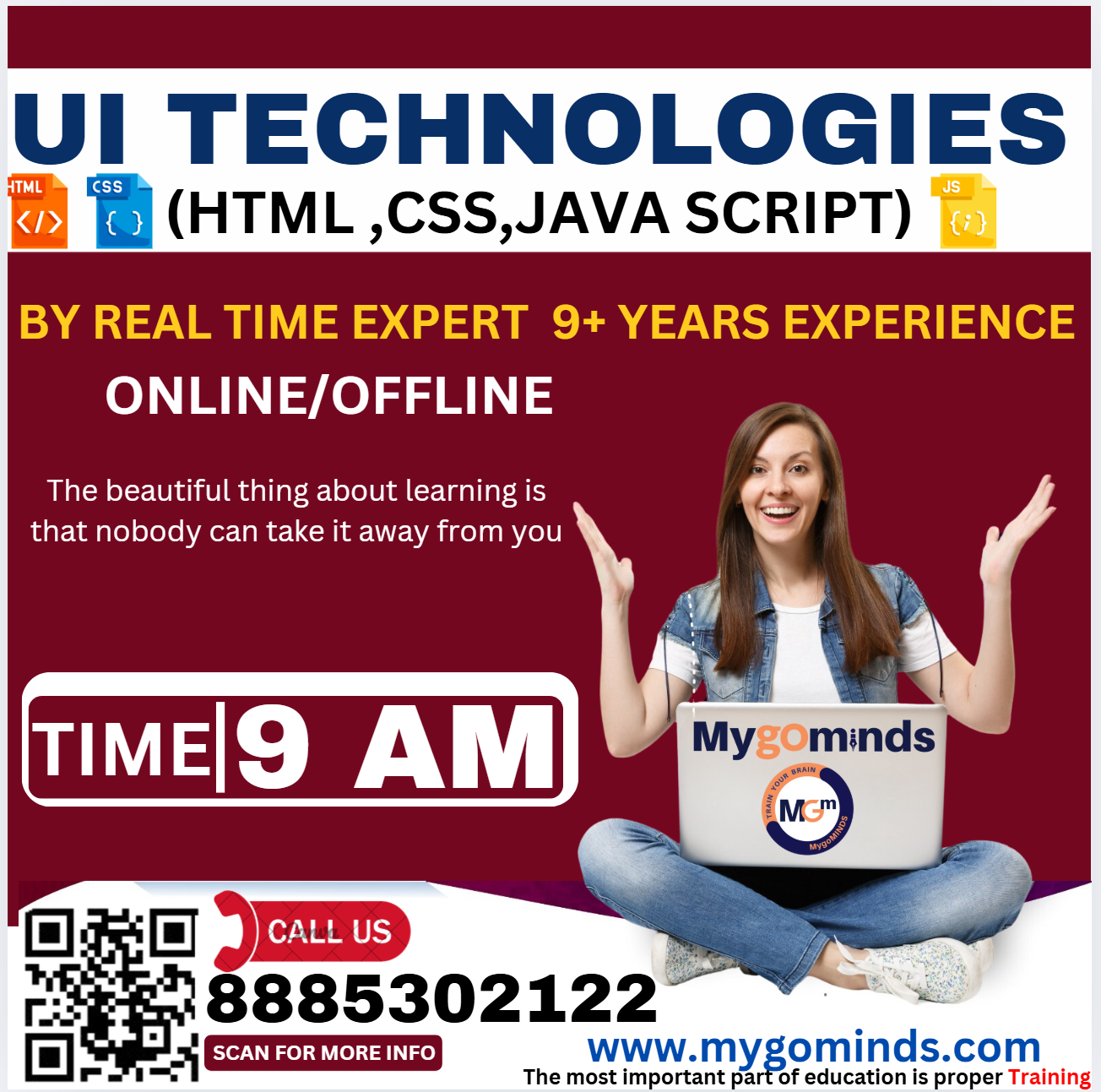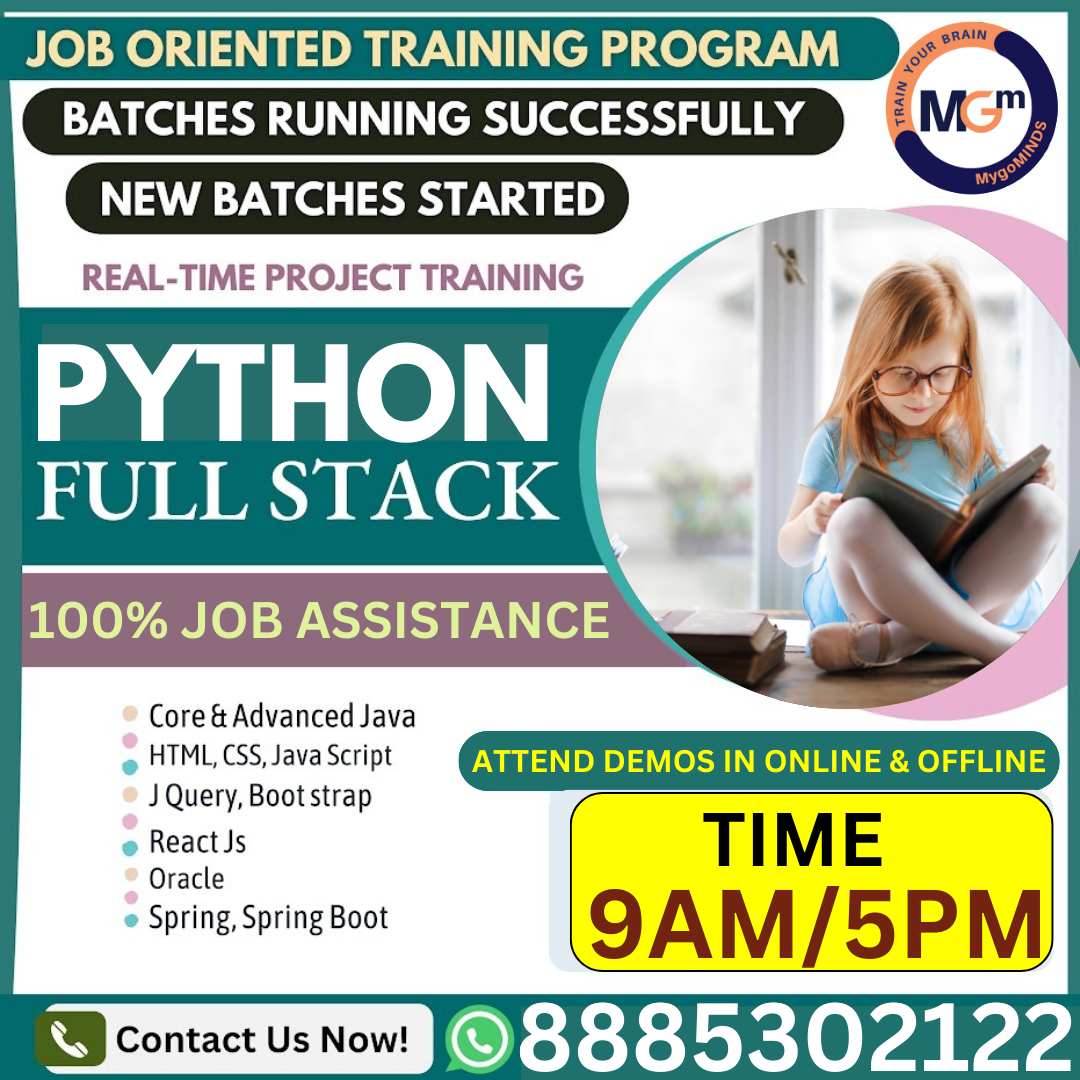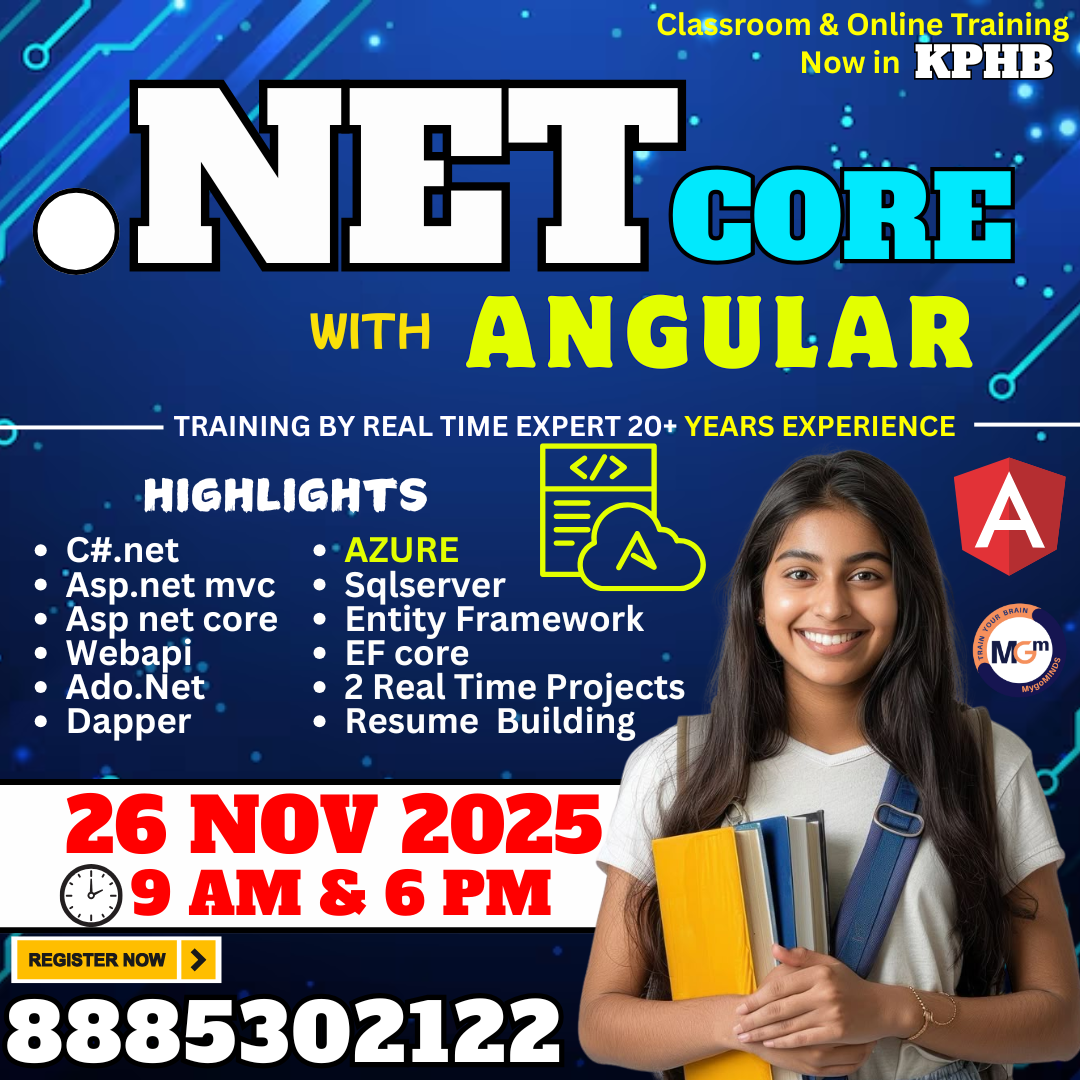-
Call Anytime
+91 8885302122
-
Send Email
mygominds@gmail.com
-
Sai Ram Towers, Above Vijetha
Super Market,JNTU CircleKPHB, Hyderabad.
Course Details

Course Overview
HTML - CSS - JAVASCRIPT
What You Will Learn?
HTML Course Content
1. Introduction to HTML
· What is HTML?
· HTML evolution and standards
· Setting up a development environment
2. HTML Basics
· HTML document structure
· HTML elements and tags
· The anatomy of an HTML tag
· Commonly used HTML elements
3. Text Formatting and Structure
· Headings and paragraphs
· Text formatting tags (bold, italic, etc.)
· Lists (ordered and unordered)
· Hyperlinks (anchor tags)
4. Images and Multimedia
· Inserting images into a webpage
· Adding audio and video content
· Embedding multimedia content from external sources
5. HTML Forms
· Creating forms for user input
· Text inputs, checkboxes, radio buttons, and dropdowns
· Form submission and handling user data
6. Tables
· Creating and formatting tables
· Adding headers and data to tables
7. Semantic HTML
· Understanding semantic elements (header, footer, section, etc.)
· Benefits of using semantic HTML for accessibility and SEO
8. HTML Best Practices
· Writing clean and maintainable code
· Code indentation and formatting
· Avoiding common HTML pitfalls
9. Real-World Projects
· Building a basic personal website
· Creating a simple contact form
· Implementing an image gallery
CSS Course Content:
1. Introduction to CSS:
· What is CSS and its role in web development?
· Inline, internal, and external CSS styles.
· CSS syntax and rules.
2. CSS Selectors:
· Understanding different types of selectors (element, class, id, descendant, etc.).
· Combining selectors to target specific elements.
· Specificity and cascading order in CSS.
3. Box Model:
· Understanding the concept of the box model (content, padding, border, margin).
· Controlling box dimensions and spacing.
· Box-sizing property.
4. CSS Typography:
· Styling text (font-family, font-size, font-weight, etc.).
· Formatting text (text-align, text-decoration, text-transform, etc.).
· Working with web fonts.
5. CSS Colors and Backgrounds:
· Applying colors (color, background-color).
· Background images and positioning.
· Creating gradients.
6. CSS Layout:
· Positioning elements (relative, absolute, fixed, static).
· Display property (block, inline, inline-block, flex, grid, etc.).
· Float and clear properties.
7. CSS Flexbox:
· Introduction to Flexbox and its layout properties (flex-direction, justify-content, align-items, etc.).
· Building flexible and responsive layouts.
8. CSS Grid:
· Introduction to CSS Grid and its layout properties (grid-template-columns, grid-template-rows, etc.).
· Creating complex grid-based layouts.
9. CSS Transitions and Animations:
· Transition properties for smooth element transitions (transition-property, transition-duration, etc.).
· Keyframes and animation properties for creating animations.
10. Responsive Web Design with CSS:
· Media queries for responsive layouts.
· Mobile-first design principles.
· Flexibility and fluidity in responsive design.
11. CSS Preprocessors:
· Introduction to CSS preprocessors like Sass or Less.
· Variables, nesting, and mixins.
12. CSS Architecture and Best Practices:
· BEM (Block Element Modifier) methodology.
· Managing CSS with proper organization and naming conventions.
· CSS optimization techniques for performance.
13. CSS Frameworks:
· Overview of popular CSS frameworks like Bootstrap or Foundation.
14. CSS Grid Systems:
· Understanding and working with grid systems for responsive layouts.
15. CSS in Real-World Projects:
· Practical exercises and projects to apply CSS concepts in real-world scenarios
JavaScript Course Content:
1. Introduction to JavaScript:
· What is JavaScript?
· History and evolution of JavaScript.
· Java Scripts role in web development.
· Setting up a development environment.
2. JavaScript Basics:
· Variables and data types.
· Operators and expressions.
· Control flow statements (if-else, switch, loops).
3. Functions:
· Defining and invoking functions.
· Function parameters and return values.
· Function scope and closures.
· Anonymous functions and arrow functions.
4. Arrays and Objects:
· Creating and manipulating arrays.
· Array methods (forEach, map, filter, etc.).
· Working with objects and properties.
· JSON (JavaScript Object Notation).
5. DOM Manipulation:
· Introduction to the Document Object Model (DOM).
· Selecting elements from the DOM.
· Modifying HTML content and styles dynamically.
· Handling events (click, submit, etc.).
6. Asynchronous JavaScript:
· Introduction to asynchronous programming.
· Callbacks, Promises, and Async/Await for handling asynchronous operations.
· Fetch API for making HTTP requests.
7. Error Handling:
· Handling exceptions with try-catch blocks.
· Understanding common JavaScript errors and debugging techniques.
8. JavaScript Modules and Packages:
· Modularizing code with JavaScript modules.
· Working with npm (Node Package Manager) and using external packages.
9. ES6 and Beyond:
· Introduction to ES6 (ECMAScript 2015) features.
· Arrow functions, template literals, let and const, destructuring, etc.
10. Web APIs and Libraries:
· Introduction to browser APIs (localStorage, geolocation, etc.).
· Using third-party JavaScript libraries (e.g., jQuery).
11. Introduction to Front-End Frameworks:
· Brief overview of popular front-end frameworks like React, Angular, and Vue.js.
12. JavaScript Best Practices:
· Code organization and maintainability.
· Performance optimization techniques.
· Writing clean and efficient code.
13. Project Work:
· Building real-world applications using JavaScript.




